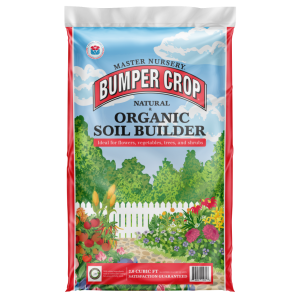Spring. It’s the time of year we conjure humorous images of the mischievous Peter Rabbit wreaking havoc in Mr. McGregor’s vegetable garden. Like the Beatrix Potter story, carrots are ideal for children and adults alike. They are fun and easy to grow for all ages and provide many health benefits.
Carrots consumption:
- Improves vision
- Boosts brain health
- Acts as an anti-inflammatory
- Supports immunity
- Reduces the risk of heart disease
- Regulates blood pressure
- Balances blood sugar
Eaten raw, boiled, steamed, or roasted, carrots have a delicate sweet flavor that may be enjoyed by even the pickiest of people and bunnies.
Fun Fact: Carrots are more nutritious when eaten cooked rather than raw. Cooking them until just tender increases available carotenoids, an antioxidant that enhances the immune system and protects from disease.
Carrot Crops
Carrots come in a variety of:
- Colors: white, yellow, orange, red, and purple
- Shapes: round, blunt, pointed
- Sizes: baby, small, medium, and long as well as thick and thin
As far as we know, neither Peter nor Mr. McGregor preferred a particular carrot, but we know of a few varieties that are worth recommending.
Adelaide
Orange
Baby Carrot, 3” long
50 days to maturity
Early season, fit more in a small space
Atlas
Orange
Round, 1 ½ to 2” diameter
70 days to maturity
Distinctive shape
Bolero
Orange
Thick, 7 – 8” long
75 days to maturity
Late season, great storage quality
Rainbow Mix
White, yellow, purple, and red mix
Thin, 7 – 9” long
67 days to maturity
Attractive colors, unique taste
Romance
Deep orange
Blunt, 6 – 7” long
70 days to maturity
Consistently good flavor
Carrot Cultivation
The single most important factor in carrot growing success is the soil! Carrots require very loose, fertile, well-drained soil with good moisture-holding capacity for long, smooth root development. Most gardens and gardeners are not fortunate enough to have the perfect soil for growing carrots; that’s where Master Nursery® comes in. Our convenient, bagged, premium soils and soil amenders are perfect for taking your native soil to the next level. To find a retailer near you, see our Bumper Crop® store locator.
To prepare your garden when planting carrots:
- In-ground Beds
Till native soil to at least 1 foot deep, removing all rocks and debris, and evenly spread at least 4 inches of Master Nursery® Bumper Crop® Soil Builder [Eastern & Midwestern Regions | Western Region] atop the soil surface and till again; this is best done in the fall. - Raised Beds [Eastern & Midwestern Regions Only]
Fill your raised beds with Master Nursery® Bumper Crop® Soil Builder; no other soil is needed. - All Containers
Fill grow bags and tubs with Master Nursery® Bumper Crop® Potting Soil [Eastern & Midwestern Regions | Western Region]. Make sure that tubs have adequate drainage holes to prevent rot.
Not sure how much soil you will need? Our handy Soil Calculator makes it easy to avoid over or under-estimating the amount required for your particular garden size.
When amending the soil in garden beds and filling containers and raised beds, incorporate Master Nursery® Bumper Crop® Tomato and Vegetable Food; this will get your carrots off to a healthy start.
Carrot Care
Carrots are direct sown beginning in the early spring, as soon as the soil is workable, through mid-summer. Carrots may be grown in the ground, but for optimum results, especially if the native soil is heavy, plant them in raised beds or containers.
Easy to sow, seeds should be set 1 inch apart and ¼ to ½ inch deep in rows 12 – 18 inches apart. Keep the soil continually moist while the seeds germinate. Once the green leaves begin to form, thin the seedlings to approximately 2 inches apart, depending on the variety and shape of the selected carrot. It is important to keep the rows weed-free to avoid root competition.
Keep carrot roots consistently moist but not wet through their growing period. Mulching the rows will help retain soil moisture and discourage weeds from taking over. Carrots should be side dressed with Master Nursery® Bumper Crop® Tomato and Vegetable Food one month after thinning and again one month after that. Carrots may be eaten at any stage. Harvest them when they reach their preferred size. Do not allow them to exceed their recommended size, or they will become woody, and the taste will decline.
Carrot Tip: To avoid an overabundance and to support a continuous supply of tasty carrots, plant just enough seed to meet your needs every three weeks throughout the season. Stop planting carrots approximately 100 days before the expected first frost date. This planting should be a variety selected for storage and, after harvest, should be kept in a cool environment, about 32 degrees Fahrenheit, with high humidity. Don’t forget to plant a few extra carrots for Peter and his friends.
Need more gardening inspiration? Click here.








